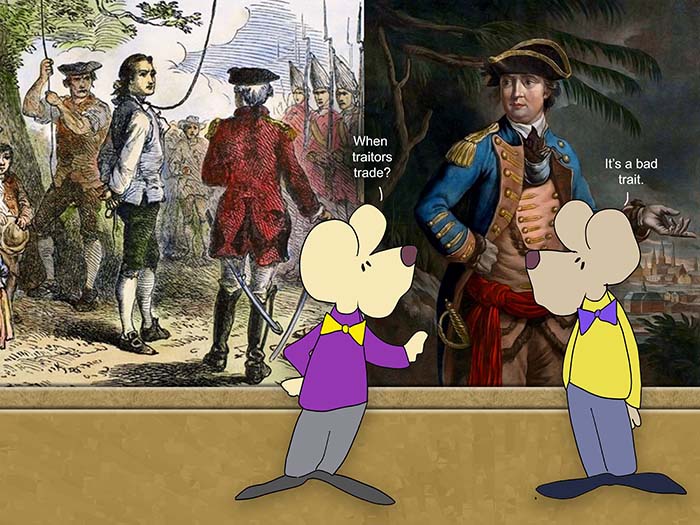This date in history, September 21, shows two completely different sides of America. The one that is for the good of the United States and the one that is against.
In 1776, British soldiers arrested Nathan Hale. The young patriot spied on the British for General Washington and the American army. Hale volunteered. His mission involved going behind enemy lines and reporting on the British troops’ movements. He knew, if caught by the Brits, his spying activities would be immediately punishable by death.
According to plan, he was ferried across the Long Island Sound to Huntington, New York, on British-controlled territory. Hale planned to disguise himself as a Dutch schoolteacher looking for work. As luck would have it, while he was in Long Island, a great portion of New York fell to the British army, and Washington was forced to retreat north. Sometimes, what can go wrong, will go wrong.
Shortly after, on September 21, a quarter of the lower portion of Manhattan burned in the Great New York Fire of 1776. The fire was later widely thought to have been started by American saboteurs, though Washington denied having any responsibility.
As all of this fell apart, Major Robert Rogers of the Queen’s Rangers saw Hale in a tavern and recognized him. He sat and chatted with Hale, luring him into admitting his allegiances to America. Rogers pretended to be a Patriot himself. And then. Rogers and his Rangers apprehended Hale.
On the morning of September 22, 1776, Hale was marched along Post Road to the Park of Artillery. Today, this is the intersection at 66th Street and Third Avenue. Hale and hanged from a tree. He was 21 years old.
The next event, on a different scale and scope, took place in 1780, four years later, on this same date, September 21. Benedict Arnold gave British Major John André the map and plans to West Point. Treason.
Arnold had been an American military officer who served during the Revolutionary War. In fact, he fought with distinction for the American Continental Army. He rose through the ranks, all the way to major general. But. There is always a but.
Because of many factors, he turned coats. Looking back on his service, Arnold had been badly wounded twice in battle. Not only that, he lost his business in Connecticut, which made him profoundly bitter. He looked bitter in all the paintings of him. Think how long he had to stand there for those portraits, looking bitter.
Anyway. He also had grown resentful of several younger generals who had been promoted ahead of him. They were given honors that Arnold thought he deserved. And then came his court-martial. Arnold was convicted of two minor charges of using his authority to make a profit. General Washington gave him a light reprimand, yet, this only heightened Arnold’s sense of bitterness and betrayal.
Regardless of this, Arnold had already opened communications with the British before his court-martial even began, negotiating his plans for treason.
Before defecting to the British side of the conflict in 1780, his General, George Washington, gave Arnold his full trust. He placed him in command of West Point, New York.
Arnold planned to hand the fort to British forces, but the plot was discovered in September 1780. So he ran. Yes, Arnold fled to the British lines and later received a commission as a brigadier general in the British Army. Arnold’s name quickly became a byword in the United States for treason. He led the British army in battle against the very men whom he had once commanded.
So.
We have the Hales.
We have the Arnolds.
And part of this, still feels terribly familiar today.
==========
“It’s discouraging to think how many people are shocked by honesty and how few by deceit.”
― Noël Coward, Blithe Spirit
=========
“You wear a mask for so long, you forget who you were beneath it.”
― Alan Moore, V for Vendetta
========
“Honest people don’t hide their deeds.”
― Emily Brontë, Wuthering Heights
=========
Arnold vs. Hale. Both sides of the struggle.
